Your Guide to Mustard Varieties
Meet the condiment that completes hot dogs, burgers, sandwiches, and so much more.
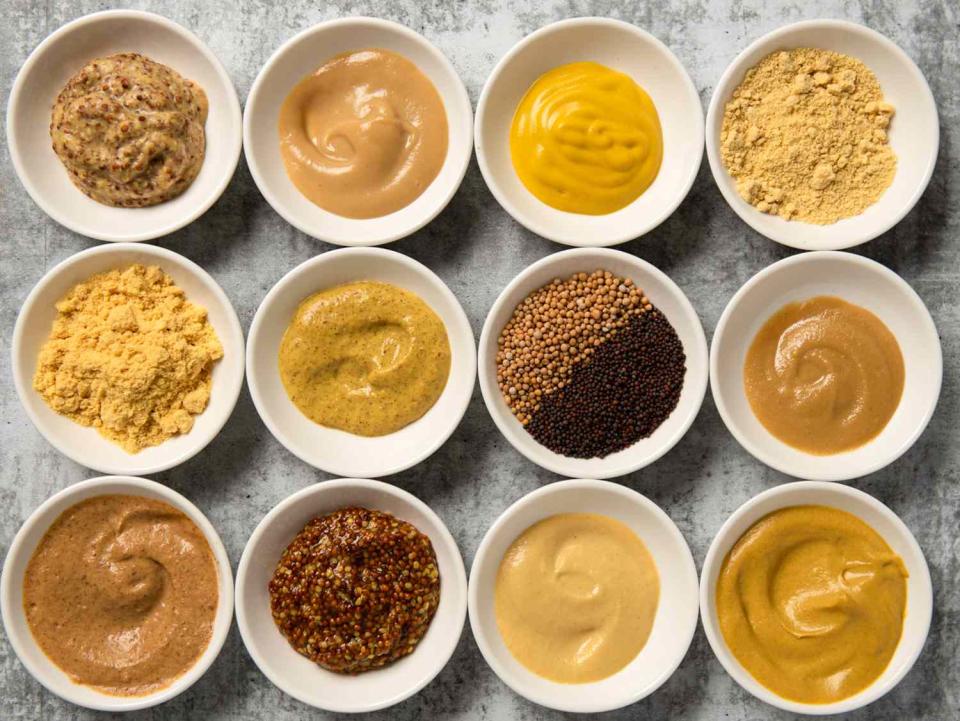
Serious Eats / Liz Clayman
Mustard is one of the worlds oldest condiments, dating back to early Roman cooks, who combined ground mustard seeds with an unfermented grape juice called must to make the hot paste mustum ardens, or "burning must." This was shortened to merely "mustard" when the condiment arrived in the English speaking world, but not that much has really changed with mustard over time.
At its most basic, mustard is made by mixing the ground seeds of the mustard plant with liquid, but it's the choice of seeds and type of liquid used that creates the varieties of mustard we know today. The magic of mustard's pungency and heat comes from enzymes that convert into mustard oil once the seed is broken. The nasal-clearing burn produced is a natural defense against insects, but when mixed with a liquid, this reaction can be stabilized to varying degrees, resulting in a condiment that can add the right bite to complete hot dogs, burgers, sandwiches, and so much more.
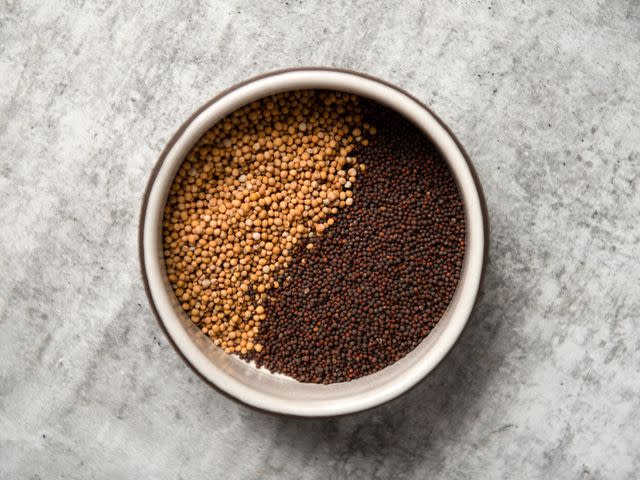
Serious Eats / Liz Clayman
The level of heat in a given mustard is directly related to the specific type of seed used. Yellow mustard seeds (also called white) are the mildest, while brown and black seeds are much hotter and more pungent.
That said, the liquid used to moisten those seeds and bind the mustard also has a large impact on its pungency. See, dried mustard seeds or powders have no real heat on their own. It's not until they're combined with water that natural enzymes present in the mustard work to liberate pungent compounds from their dormant state. The more acidic the liquid, the slower this reaction will take place, and the longer the final heat will last. Mustards made with vinegar will have a long-lasting, slow burn, while those made with less acidic liquids like pure water, will be extremely pungent when freshly prepared, but lose that punch more quickly.
The temperature of the water can also affect heat level—hot water will deactivate mustard enzymes and break down some of the pungent compounds, while cold water will keep them all intact. The mildest mustards with the longest shelf life are made with yellow mustard seeds and plenty of vinegar, while the hottest mustards are made with black or brown mustard seeds and cold water.
Tip
Look for mustards with expiration dates over six months from the day you buy them, to ensure you're getting the hottest, most flavorful mustard possible.
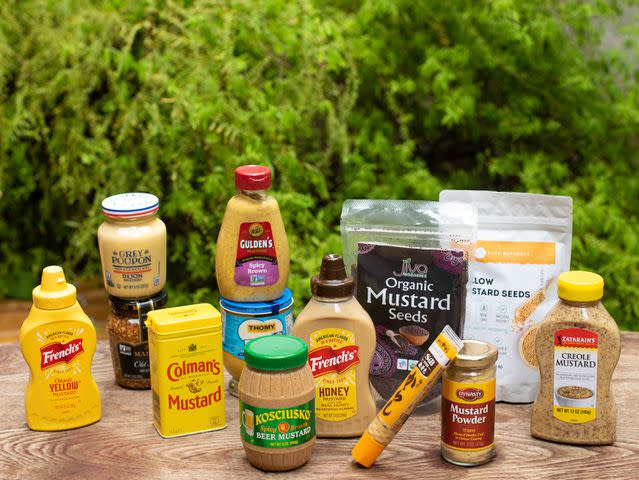
Serious Eats / Liz Clayman
Even though the volatile mustard oils can be stabilized to a point by this acidic reaction, bottling, and refrigeration, they still gradually lose their heat over time. That's why it's always best to look for mustards with expiration dates over six months from the day you buy them, to ensure you're getting the hottest, most flavorful mustard possible.
Making mustards at home is relatively quick and easy, and will result in a more pungent product than what you can get off the shelf because mustard oils are at their most potent right after the seeds have been ground. With homemade mustards, though, you'll encounter another byproduct of breaking a mustard seed—bitterness. Mustards are naturally slightly bitter, but if you've ever tasted a freshly ground mustard, you know how unpleasant it can be at the extreme. Fortunately, it only takes two to three days for this bitterness to mellow and the mustard to be usable.
Whether store bought or homemade, it's good to understand the differences between the many mustards out there, so you can make the best use of this versatile and delicious condiment.
Yellow Mustard
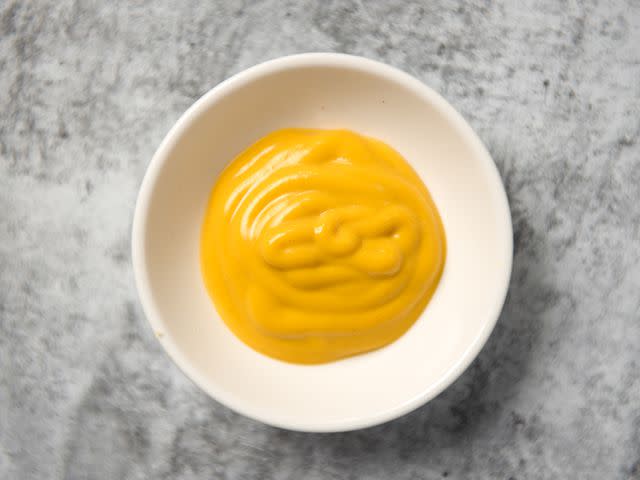
Serious Eats / Liz Clayman
Type of mustard seed: Yellow.
Heat level: Low.
Use: As a condiment on hot dogs, hamburgers, in dressings, barbecue sauces, and marinades.
The gold standard for American mustards is the yellow variety. Its bright yellow color comes from the sole use of finely ground yellow mustard seeds, as well as the powerful coloring spice turmeric. These two ingredients are mixed with vinegar and water, and sometimes a few other mild spices, to create a thick sauce.
On the mustard heat scale, yellow seeds are at the bottom, which is why this variety doesn't deliver that sinus clearing punch, but a good yellow mustard should still have a clean, sharp mustard flavor. Because of its mellowness, yellow mustard is rightfully an all-purpose product, as much at home on hot dogs and hamburgers as it is mixed into dressings, barbecue sauces, and marinades.
Get Recipe: Yellow Mustard
Honey Mustard
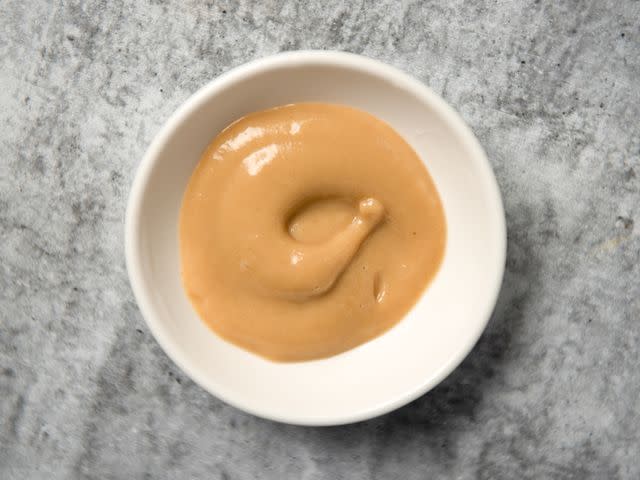
Serious Eats / Liz Clayman
Type of mustard seed: Yellow is commonly used.
Heat level: Low.
Use: Dipping sauces, dressings.
Honey mustard is exactly what its name implies—a mixture of honey and mustard. This is usually done in a one-to-one ratio, but can be adjusted based on personal taste. Since the goal of honey mustard it to bring sweetness to a sauce that's known for its heat and bitterness, yellow is the most common mustard used, because it starts with an already mild flavor that's easy to tame further with honey.
The resulting sweet sauce retains some of its mustard complexity, although much of its spicy edge is neutralized. That makes it well suited as a dipping sauce —a chicken finger dunked into honey mustard comes out with nothing but a smooth and sweet flavor that's easy to digest. It's also great for making sweeter dressings and for dishes that would benefit from a more mild mustard approach, like this grilled chicken and spinach salad with honey mustard dessing.
Spicy Brown Mustard
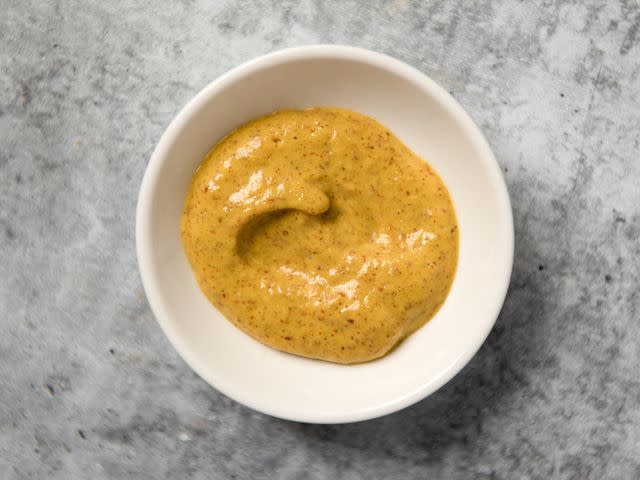
Serious Eats / Liz Clayman
Type of mustard seed: Brown.
Heat level: High.
Use: As condiment for big, meaty sandwiches.
Amping up the natural heat of mustard seeds, spicy brown mustard is aptly named. It's made with brown mustard seeds, which are soaked in less vinegar than a standard mustard. The combination of the hotter seeds and less acidity makes sure the nose-scorching heat is much more pronounced. Spicy brown mustard also leaves the bran on the seeds, which don't fully break down when processed, giving the final sauce a coarser texture than yellow mustard. It can be mixed with spices like cinnamon, ginger, and nutmeg to give the mustard a slight earthy undertone.
Spicy brown is also known as deli mustard, and for good reason. This mustard is made to stand up against other robustly flavored items like pastrami, roast beef, and sausages, making it a good choice for big, meaty sandwiches.
Get Recipe: Spicy Brown Mustard
Dijon Mustard
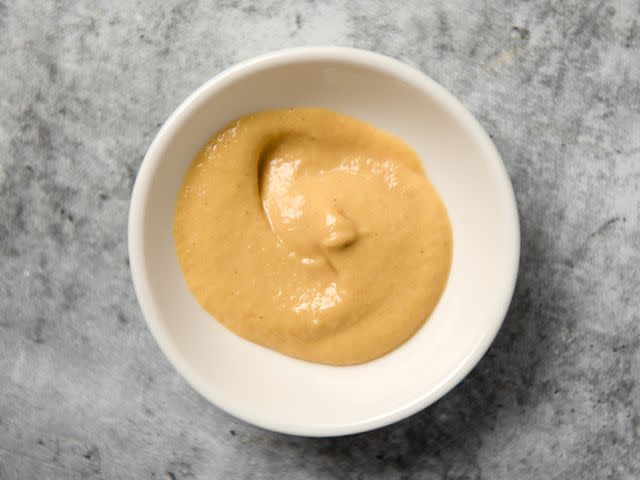
Serious Eats / Liz Clayman
Type of mustard seed: Brown and/or black.
Heat level: High.
Use: In vinaigrettes, mayos, and sauces.
Although first produced in Dijon, France, Dijon mustard does not have to be made in that region, provided it follows the formula that was first devised in 1865 by Jean Naigeon, a mustard maker from Dijon. In his smooth, brown seed mustard, verjuice—an acidic juice made from unripe grapes—was substituted for the common vinegar. Acidity slows the reaction that produces the intense heat of mustard, so switching to a less acidic liquid gives Dijon mustard a robust profile, intensified heat, and a more pungent flavor.
Today, most Dijon mustards are made with other low-acidity liquids—most commonly white wine—and utilize the hotter brown and/or black mustard seeds. Its sharp and strong flavor can be used in most places yellow mustard can when you're looking to add a sharper bite. Dijon works especially well in vinaigrettes, mayos, and sauces, where a little can go a long way in developing flavor.
Whole Grain Mustard
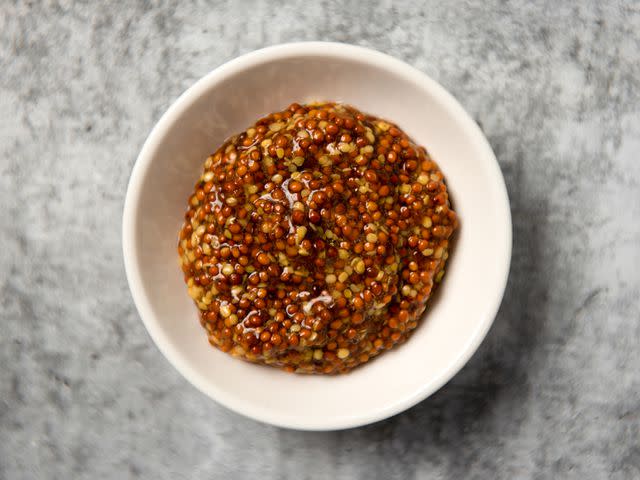
Serious Eats / Liz Clayman
Type of mustard seed: Brown and black.
Heat level: High.
Use: On cheese plates or sandwiches, in dressings.
Whole grain mustard is simply a mustard that has been ground just enough to to form a paste, but not so much that it fully breaks down all the mustard seeds, creating a thick, coarse texture. Whole grain mustard is not beholden to any formula per se, but most that you pull off the shelf are of Dijon influence, or a variation on that. The use of wine instead of vinegar, and brown and black seeds instead of yellow, makes many whole grain mustards pack a punch.
I personally love the extra texture and bite of a whole grain mustard, and it's my go-to choice for cheese plates or ham sandwiches. It also works well in dressings, giving an otherwise smooth sauce a bit of texture.
Get Recipe: Whole Grain Dijon Mustard
Hot Mustard
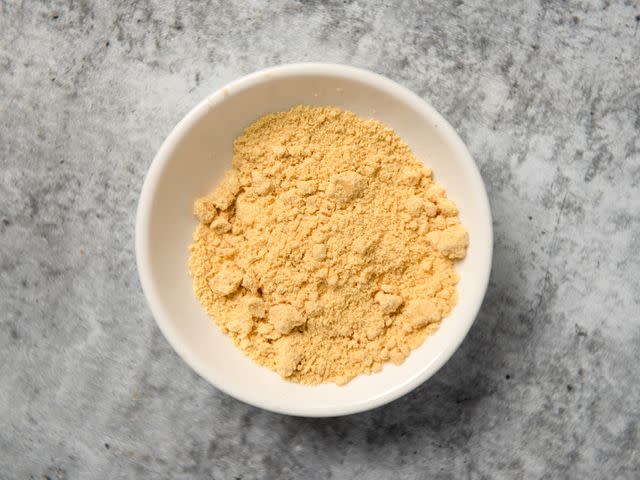
Serious Eats / Liz Clayman
Type of mustard seed: Brown or black.
Heat level: High.
Use: In dipping sauces.
There are two ways to temper a mustard seed's natural heat—mix in hot water, and/or an acid. Take both of those out of the equation, and the full mouth-scorching potential of mustard is unleashed. This is exactly how hot mustard is made—start with ground brown or black mustard seeds and whisk in a proportionate amount of cold water. The mustard then gradually gains heat, peaking around 15 minutes, before beginning to mellow out. Adding in vinegar or storing hot mustard in the refrigerator once it's at its hottest will slow down this decline of heat, but won't stop it, which is why store-bought hot mustard won't be as potent as ones made at home.
There are many varieties of hot mustard, but the one that's probably most familiar is the hot mustard found at the bottom of American take-out Chinese bags. A little dunk of an egg roll in hot mustard sets your mouth on fire, which can be partially relieved by a subsequent dip in the contrasting sweet duck sauce.
Get Recipe: Hot Mustard
English Mustard
Tip
English mustard is best bought in powdered form and mixed with cold water about 15 minutes prior to use, to unleash its full flavor and heat.
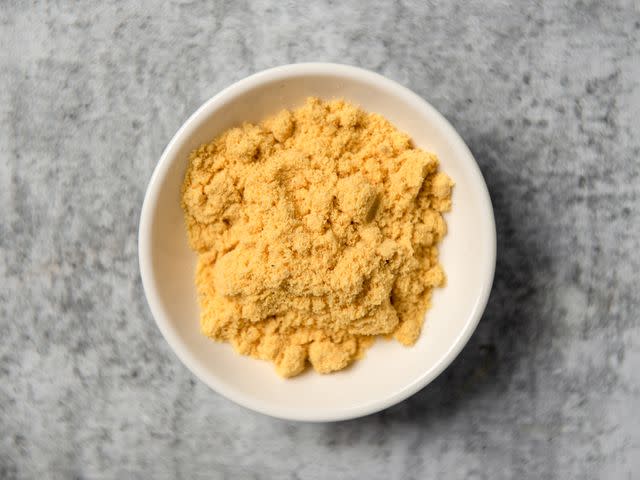
Serious Eats / Liz Clayman
Type of mustard seed: Yellow and brown.
Heat level: High, but not as hot as Chinese hot mustard.
Use: In sandwiches, roasts, or sauces.
English mustard is just one variety of hot mustard. Most commonly seen under the Colman's brand, English mustard is a mix of yellow and brown mustard seeds. It forgoes the vinegar to unleash as much heat as possible (an acid is added to stabilize jarred English mustards), but since it folds in the more subdued yellow seeds, it's not quite as hot as a Chinese hot mustard.
It does come bottled, but like any hot mustard, English mustard is best bought in powdered form and mixed with cold water about 15 minutes prior to use, to unleash its full flavor and heat. This is just the ticket when you want to add a strong kick to your sandwiches, roasts, or sauces.
German Mustard
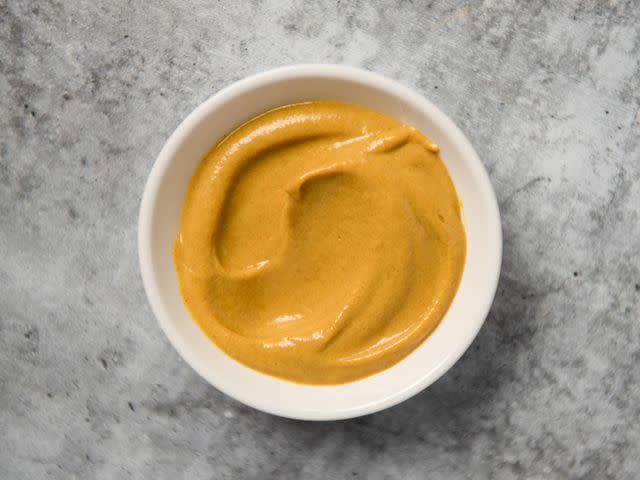
Serious Eats / Liz Clayman
Type of mustard seed: Yellow and brown.
Heat level: Ranging from spicy to sweet.
Use: On grilled sausages or pretzel.
Germany loves its mustard, to the point that it defies classification. You can't judge a mustard merely by the "German" label, because mustards from this country can range from spicy to sweet and coarse to fine. Some German mustards also involve extra ingredients, like horseradish, to enhance their flavor.
The most prolific type of mustard in Germany is a mix of yellow and brown mustard seeds called Mittelscharf, or medium hot, for a distinctive spiciness that's a step up from a Dijon. If you head West to Düsseldorf, the mustard heats up, thanks to a pinch more brown mustard seeds, a less acidic spirit vinegar, and more spices. Travel south to Bavaria and the mustard gets sweeter with the addition of honey, brown sugar, or applesauce.
In true German spirit, there's more than one wurst to pair with each of these mustards, but I think any of them will go great with a grilled sausage or a hot soft pretzel.
Beer & Spirit Mustards
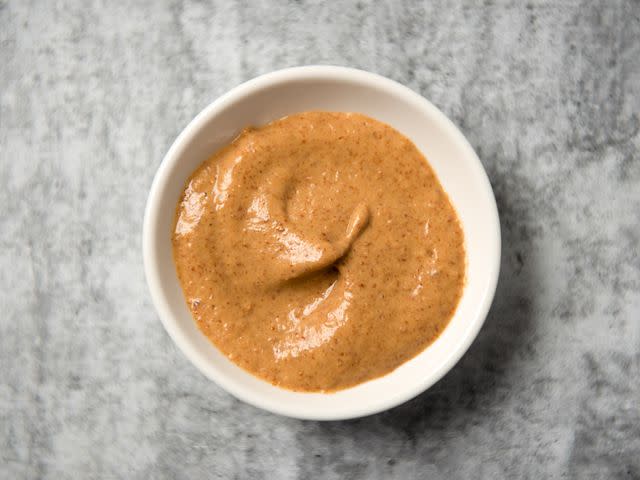
Serious Eats / Liz Clayman
Type of mustard seed: Any combination of brown, black, and yellow.
Heat level: High.
Use: As a dip.
Beer mustard is said to have been born in the Midwestern United States around the 20th century. As its name implies, this mustard uses beer as the liquid base in place of, or sometimes in addition to, vinegar. Having less acidity, beer mustard usually delivers heat in a big way, which can end up masking the flavor of the beer when mellow brews are used. Fuller flavored beers, on the other hand, like porters, dark ales, and stouts, can impart their character on the mustard and create complexity beyond what you'd find in a standard vinegar-based mustard.
Similar to beer mustard, spirits can be added into the mix, although this is typically done in addition to vinegar instead of in place of it. Since they're stronger than beer, spirits can quickly add depth and character to a mustard. Whiskeys and bourbons are popular choices for spirit-based mustards, since their distinct flavors pair well with the pungency of mustard seeds.
Beer and spirit mustards can be subbed in most mustard situations, but I prefer them when used as dip rather than slathered on sandwiches or in dressings, in order to best taste the entire range of flavors that the beer or spirit has added to the mustard.
Get Recipe: Spicy Beer Mustard
May 2014
Read the original article on Serious Eats.

